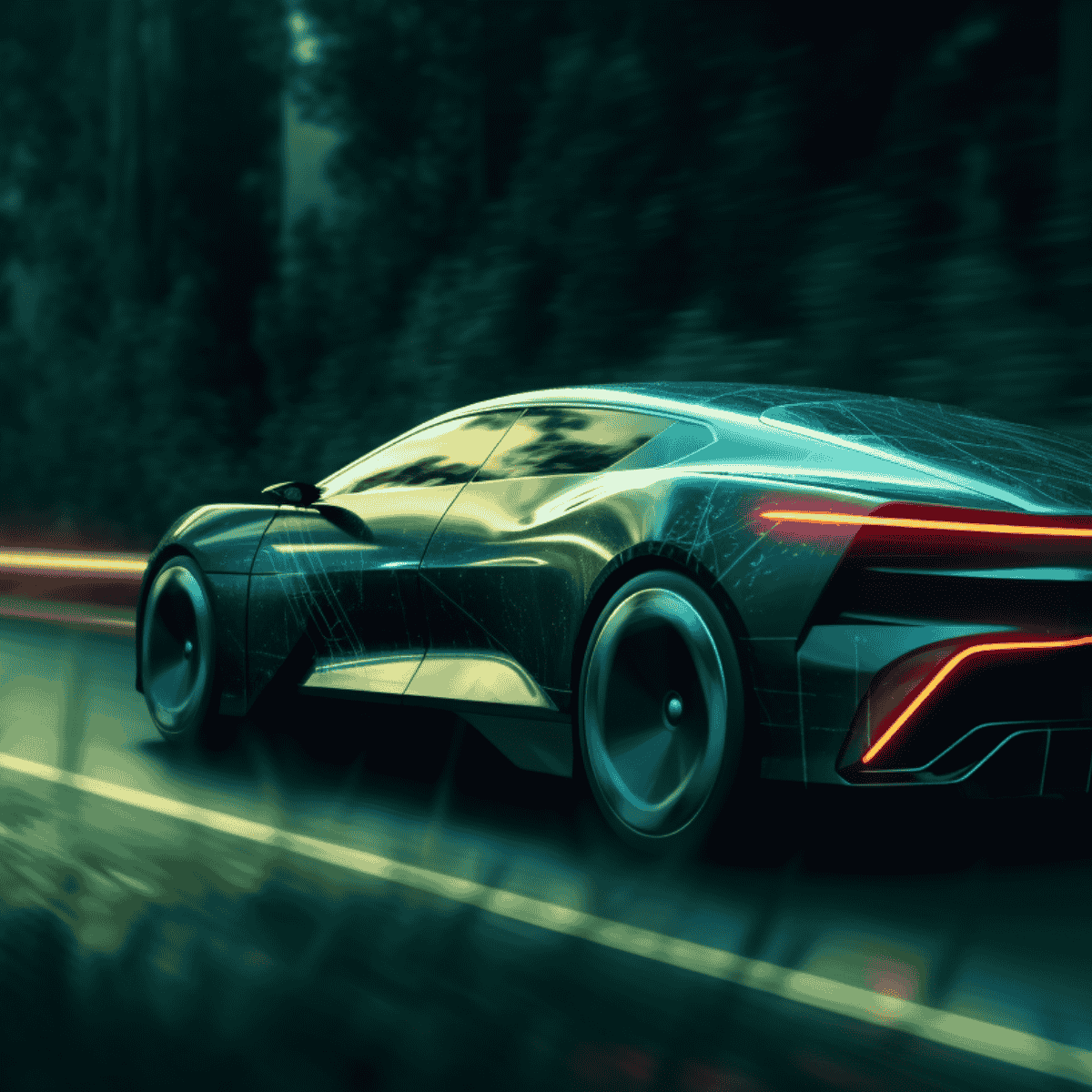Nikola's $30 Billion Bet on the Wrong Horse

At GetFocus, we’ve been tracking investment patterns in tech for years, and the same story keeps playing out. Billions flow to companies promising revolutionary breakthroughs while simpler, faster-improving alternatives quietly take over the market.
The latest casualty is Nikola Motors. In June 2020, this hydrogen truck startup was briefly worth more than Ford without having delivered a single vehicle. In February 2025, it filed for bankruptcy. The $30 billion hydrogen revolution never materialized.
This failure was completely predictable. The data clearly demonstrated that battery-electric trucks were advancing more quickly than hydrogen-powered ones. Yet investors kept pouring money into the losing technology anyway.
How investors missed the signals that mattered
In 2019, Trevor Milton presented a compelling vision. Hydrogen trucks could refuel in minutes, just like diesel. They had a longer range than batteries. The infrastructure for hydrogen trucks appeared simpler to develop than the extensive charging networks required for electric vehicles. It checked several boxes: clean, fast, practical.
So, the pitch worked.
By 2019, Milton had secured over $1 billion in funding from major players who had extensive knowledge of the transportation industry. CNH Industrial, which makes trucks for a living, put up $250 million. Bosch, the engineering giant, invested heavily in fuel-cell development. Hanwha brought expertise in clean energy production.
These weren't naive venture capitalists chasing the latest trend either.
CNH Industrial had been working on alternative powertrains for years. Bosch had deep expertise in automotive technology. They did their homework, analyzed market projections, evaluated the technology roadmap, and concluded hydrogen made sense for heavy-duty vehicles.
When Nikola went public through a SPAC in June 2020, everything seemed to validate their analysis. The stock went crazy. The company hit $28.8 billion in value, matching Ford's market cap.
For a brief moment, hydrogen looked like the future of trucking.
But those investors missed seeing around the corners. They were instead looking at the wrong data. Traditional analysis in 2019 focused on market size, competitive positioning, and patent filing patterns. The standard metrics painted a picture of gradual growth, with fuel-cell technology advancing steadily toward commercial viability, especially with major automotive suppliers backing it.
What they missed was the innovation velocity. While they were analyzing market forecasts, battery-electric technology had been pulling ahead in improvement rate since 2015. Traditional tools show what's being invented and who's getting funded, but they don't reveal how fast technologies are actually getting better. GetFocus measures Technology Improvement Rates (TIR) - how quickly a technology's core performance advances over time. Every technology has its own exponential improvement curve, and these rates stay remarkably stable. Technologies with higher improvement rates consistently end up disrupting their domain.
By 2019, when those major investments were flowing to Nikola, the trend was clear: battery-electric trucks were improving at 38% per year while fuel-cell technology had dropped to 32% and was falling. The crossover had happened four years earlier. Traditional evaluation methods focus on what technologies can do today, not how fast they're getting better. The data would only get worse for hydrogen from there.
The gap widened while Nikola soared
Just as Nikola hit its $30 billion peak in June 2020, the technology gap was widening faster than ever. Battery-electric trucks were pulling ahead at 41% yearly improvement, while fuel-cell technology had dropped to around 32%. Every quarter, the innovation velocity gap grew larger.
Around this time, Tesla was already delivering working battery trucks. Chinese manufacturers were scaling production. The improvement rates showed battery technology entering an acceleration phase just as hydrogen innovation slowed.
By 2020, fuel-cell trucks were losing the innovation race badly.
Nikola tried to survive. They built a few hundred trucks by 2024, but their own battery trucks kept catching fire, forcing expensive recalls. The promised hydrogen stations never materialized at scale.
On February 19, 2025, Nikola filed for bankruptcy.
It is now painfully obvious that Nikola and its investors didn’t ask themselves the fundamental question: which technology was getting better faster?
Connecting the dots: why this pattern keeps playing out
The real tragedy is that Nikola's failure was completely predictable. While everyone was watching funding announcements and market caps, the data was already clear. Battery-electric trucks had overtaken fuel-cell trucks in 2015, five years before Nikola's IPO.
This is why technology improvement rates (TIR) matter. Traditional analysis tells you what's happening now. Who's filing patents, and who's getting the money. TIR tells you what's going to win tomorrow. Every technology has its own exponential improvement curve, and technologies with higher improvement rates are historically the most disruptive.
Nikola wasn't alone. Better Place burned $850 million on battery swapping while lithium-ion charging improved faster. QuantumScape raised over $1 billion for solid-state batteries while LFP and silicon anodes quietly captured market share. The same pattern occurred: billions flowed to yesterday's winner while tomorrow's champion sprinted ahead.
The chart above illustrates this pattern perfectly. Fuel-cell technology actually led battery-electric in improvement rates through 2008, which explains why early hydrogen investments seemed logical. But the crossover happened around 2014-2015, and by 2019, when Nikola was raising billions, the gap was already substantial and widening. This episode highlights a key point: surface-level analysis of heavy-duty vehicles versus fuel cells can mask what's really happening underneath. When you dig deeper into the specific technologies that power these applications—the battery chemistries, energy densities, and charging systems—the signals become much clearer much earlier.
GetFocus differentiates itself by predicting which technologies will dominate tomorrow, not just tracking what's visible today. Using cycle time and knowledge flow data from global invention data, our TIR model quantifies improvement rates across technology areas. This provides early visibility into which approaches are gaining momentum—often revealing winning technologies years before they become obvious to markets.
This predictive capability raises a fundamental question about innovation strategy itself. Are our ideation methods capable of anticipating future developments? Can we design processes that explore and scale ideas based on their improvement potential rather than current market appeal? The next breakthrough might be improving at 45% annually in some lab right now while everyone funds the slower technology with better marketing.
These patterns exist across every tech domain, but they often hide beneath the applications people actually see. The question is whether you can pinpoint the speed at which these underlying technologies are progressing before your competitors—and before the next $30 billion investment is misdirected. Want to explore which technologies in your field are quietly outpacing the incumbents everyone's betting on? Let's talk.
More articles like this

A look into the future: BEV or FCEV—What AI has to say
AI-driven insights reveal why LFP batteries paired with graphene-coated silicon anodes are set to dominate EVs. This report outlines the breakthrough in energy density, Europe’s lag in adoption, and what automakers must do now to stay competitive in the global electric vehicle race.
Odin Platform Update – New Features & Improvements
We’re thrilled to introduce a range of new features and improvements on the Odin platform, designed to make your research and innovation process even more seamless. From chatting with up to 1,000 patents at once, to clickable patent links, complete patent references, and enhanced control over patent chats—this update is packed with powerful tools. Plus, our new Tracking Workflows feature helps you stay on top of critical changes in your patent sets effortlessly. Read the full post to explore how these updates can supercharge your work!

The Complex Challenge of Material Sourcing in Luxury Goods
The luxury goods sector, known for its stringent quality standards and opulent appeal, faces a daunting challenge in aligning with environmental sustainability, particularly in meeting Scope 2 and 3 emissions criteria. These scopes, part of the Greenhouse Gas (GHG) Protocol, extend beyond direct emissions (Scope 1) to include indirect emissions from purchased energy (Scope 2) and all other indirect emissions across a company's value chain (Scope 3).
Reach out to us!
Start a conversation. We are happy to help.
.svg)




